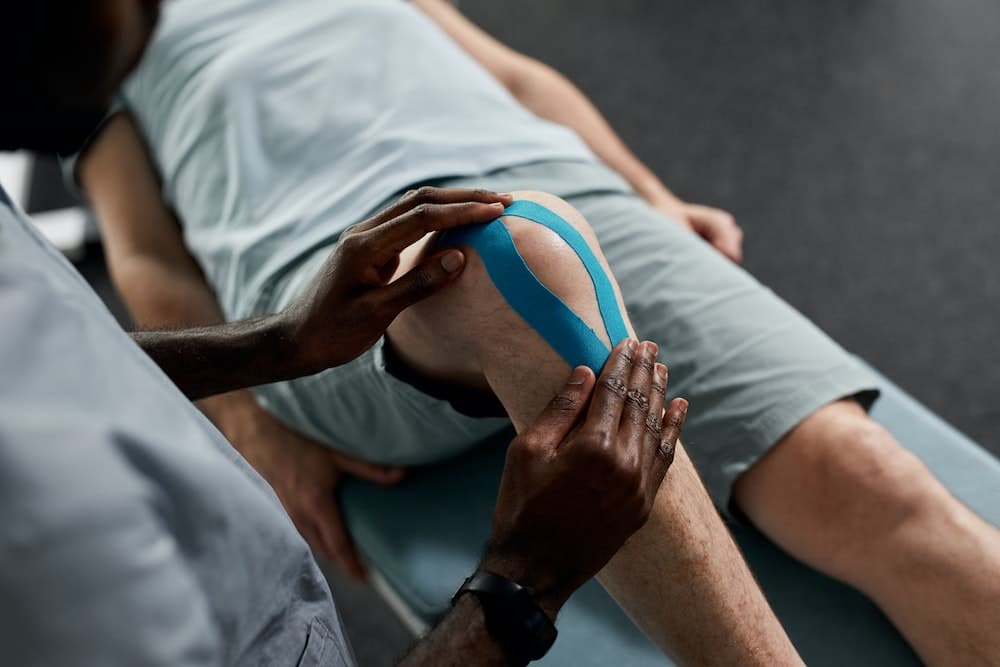How Can Aquatic Training Benefit Rehabilitation from Lower Limb Injuries?

Aquatic training has emerged as a desirable tool in the field of rehabilitation therapy, specifically concerning lower limb injuries. This form of training utilizes the unique properties of water to aid in the recovery process of patients suffering from injuries to their lower extremities. But how does this form of therapy work, and what are the benefits it offers to individuals in their path to recovery? This article will explore these questions and more, providing a comprehensive understanding of aquatic training in the context of lower limb injury rehabilitation.
The Science Behind Aquatic Therapy
Before we dive into the benefits of aquatic training, it’s crucial to understand the science behind it. Aquatic therapy, also known as hydrotherapy, utilizes the physical properties of water—including buoyancy, hydrostatic pressure, and viscosity—to facilitate rehabilitation exercises that would otherwise be challenging or impossible on land.
En parallèle : How to Use GPS Tracking for Monitoring and Improving Performance in Field Sports?
When a person is immersed in water, the aquatic environment counteracts gravity, providing a form of buoyancy that reduces body weight and eases the pressure on injured limbs. It also provides resistance in all directions, which aids in muscle strengthening and improves joint stability. At the same time, the hydrostatic pressure offered by water assists in reducing swelling and improves circulation.
Improved Mobility and Flexibility
One of the primary benefits of aquatic therapy in the context of lower limb injury rehabilitation is improved mobility and flexibility. Post-injury, patients often face significant challenges with mobility due to pain, swelling, and stiffness in the affected area. Through aquatic training, these challenges can be effectively addressed.
A voir aussi : What’s the Role of Sport Psychology in Managing Performance Slumps?
Buoyancy provides a supportive environment that allows patients to move their limbs more easily, increasing their range of motion. The water’s resistance helps strengthen muscles surrounding the injured area, consequently improving overall mobility. Furthermore, the warm temperature of the water used in aquatic therapy can assist in relaxing muscles and increasing flexibility, further enhancing the range of motion.
Pain Management and Reduction
Aquatic therapy is also highly effective in managing and reducing pain associated with lower limb injuries. The buoyancy of water reduces the weight load on the injured limb, reducing pressure and, therefore, pain. Hydrostatic pressure helps decrease swelling, a common source of pain post-injury.
The warm water used in this type of therapy can also help in pain reduction. Heat is known for its therapeutic benefits, including promoting relaxation, boosting circulation, and reducing muscle spasms—all of which can contribute to reducing pain.
Enhanced Strength and Endurance
Rebuilding strength and endurance is a critical goal in the rehabilitation of lower limb injuries. Aquatic training plays a pivotal role in achieving this goal due to water’s unique properties.
When exercises are performed underwater, the resistance created by the water can significantly enhance muscle strength. Water provides resistance in all directions, meaning that each movement made in the water engages multiple muscle groups. This all-encompassing resistance not only strengthens the muscles surrounding the injured area but the entire body. The low-impact nature of aquatic exercises also allows for longer, more sustained workouts, boosting endurance over time.
Faster and Safer Recovery
Last but not least, aquatic training can lead to a faster and safer recovery from lower limb injuries. The supportive environment provided by water allows for earlier intervention post-injury, leading to a quicker recovery process.
The risk of re-injury or complications during recovery is also significantly reduced in an aquatic environment. The buoyancy of water minimizes the impact on the body, protecting the injured area from further damage.
In conclusion, aquatic training offers a host of benefits for individuals rehabilitating from lower limb injuries. It facilitates improved mobility and flexibility, effective pain management, enhanced strength and endurance, and a safer, faster recovery. By understanding the role and benefits of this therapy, individuals recovering from lower limb injuries can make informed decisions about their rehabilitation journey.
Aquatic Therapy: A Scholarly Perspective
Aquatic therapy, with its many benefits, has garnered significant attention in the realm of scholarly research. Google Scholar and PubMed house numerous studies supporting the efficacy of this form of therapy in the realm of lower limb injury rehabilitation.
One such study focused on the benefits of aquatic therapy in individuals with spinal cord injuries. Given the limited weight-bearing capacity of these individuals, the buoyancy provided by water proved to be an effective match. The study found an increase in the participants’ range of motion and overall functional recovery following a series of aquatic exercises. This research echoes the benefits of aquatic training mentioned earlier: enhanced mobility and faster recovery.
Another study on PubMed focused on the impact of aquatic training on the knee joint, particularly in patients recovering from an anterior cruciate ligament (ACL) injury. The ACL, a crucial ligament in the knee, often takes a significant amount of time to recover post-injury. However, the introduction of aquatic therapy in the recovery process resulted in a markedly faster and safer recovery, with reduced pain and increased strength in the knee joint.
In a different vein, a study published on Google Scholar examined the effect of deep water running – a common aquatic exercise – on lower limb strength and endurance. The results highlighted a significant improvement in these areas post-training, validating the effectiveness of aquatic therapy in enhancing strength and endurance.
Positive Impact of Aquatic Training on Lower Limb Injuries: A Conclusion
Drawing from both scientific concepts and scholarly research, it is clear that aquatic therapy offers a unique and effective approach to the rehabilitation of lower limb injuries.
The properties of water, including buoyancy, hydrostatic pressure, and viscosity, create an environment conducive to healing. This therapy facilitates improved mobility and flexibility, enabling patients to regain a greater range of motion and overcome the stiffness and pain associated with their injuries.
Aquatic therapy also addresses pain management effectively. The supportive environment created by water minimizes pressure on the injured area, reduces swelling, and promotes relaxation – all significant factors in reducing pain.
Moreover, the resistance provided by water during aquatic exercises leads to enhanced strength and endurance. The low-impact nature of these exercises allows for longer workouts, ensuring an all-encompassing strength training that benefits not only the injured area but the entire body.
Lastly, aquatic training promotes a faster and safer recovery process. The supportive environment allows for early intervention post-injury, reducing the risk of complications and re-injury.
In summary, aquatic therapy, backed by scientific understanding and scholarly research, presents a compelling option for individuals recovering from lower limb injuries. It enables a comprehensive, effective, and safe rehabilitation journey, making it a valuable addition to any recovery process. The benefits highlighted in this article provide useful insights for individuals to make informed decisions regarding their rehabilitation journey.
